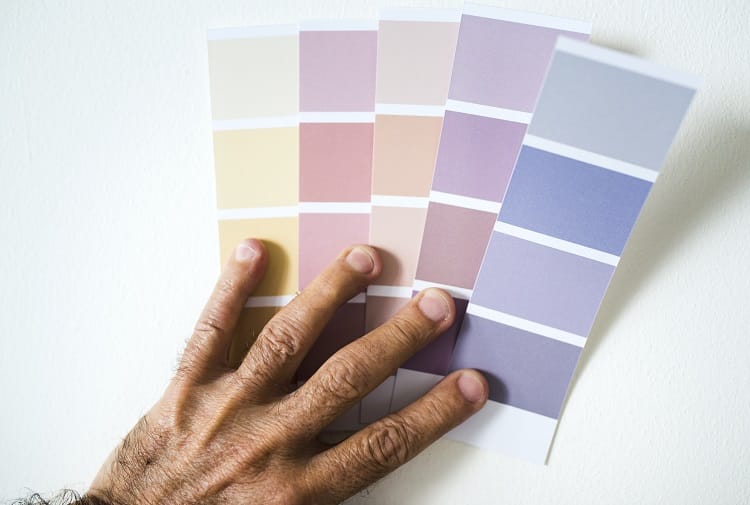Interior Painting in Murfreesboro
We know your Murfreesboro home is precious, and entrusting us to paint the interior is not something that we take lightly. We are your reliable painters. No matter what your paint project may entail, we can handle it swiftly and efficiently.
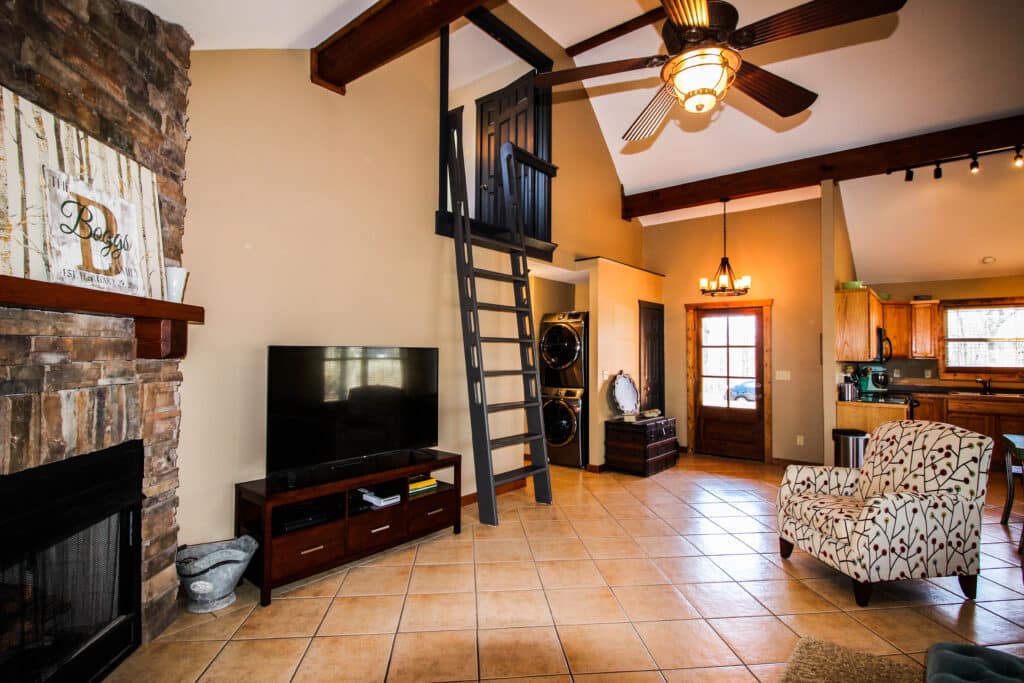
Interior Painting Services Include:
- Walls, Ceilings, Doors, and Windows
- Mantels, Bookshelves, and Cabinets
- Finish Coat Application
- Two-Coat Application
Other Interior Services Include:
- Minor Drywall work
- Trim Work
Adding a pop of color to the inside of your home can really make all the difference. However, if you don’t have the right person to paint the interior, you could be less than satisfied with the outcome. Have your home painted the right way with those who have years of experience in interior painting and fall in love with your home all over again.
How Often Your Home Should Be Painted:
Although your home doesn’t need a fresh paint of coat frequently, having it updated every once in awhile can help upkeep the look of your home. Below is how often this should be done to each room in your Murfreesboro home.
- Hallways and Corridors — every 2 to 3 years
- Bedrooms — every 2 to 3 years
- Living and Dining Room — every 5 to 7 years
- Kitchen and Bathrooms — every 3 to 4 years
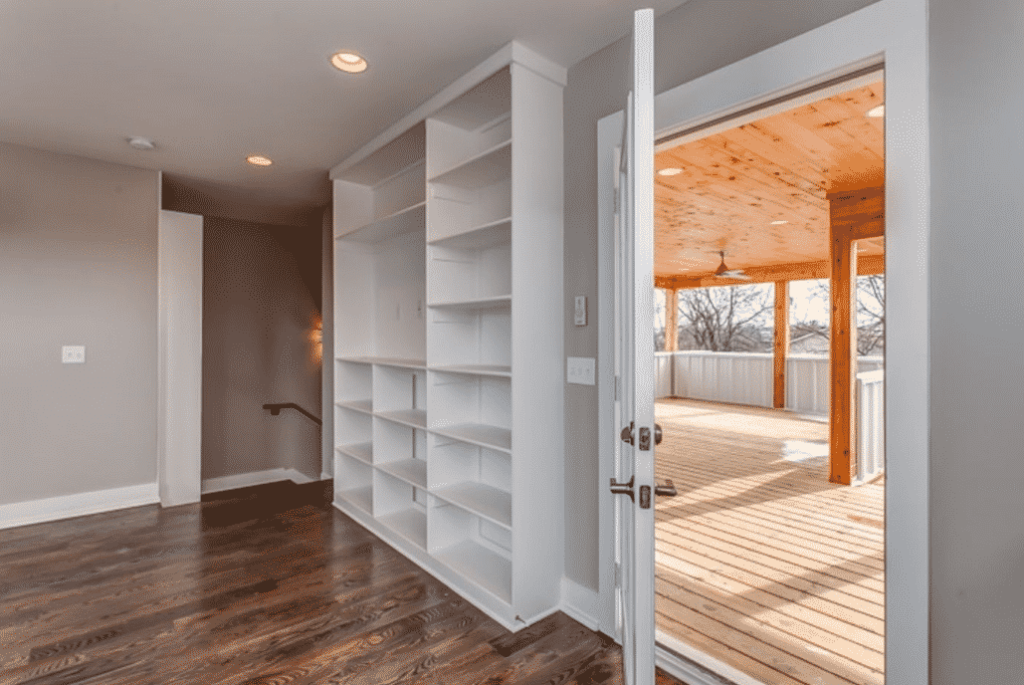
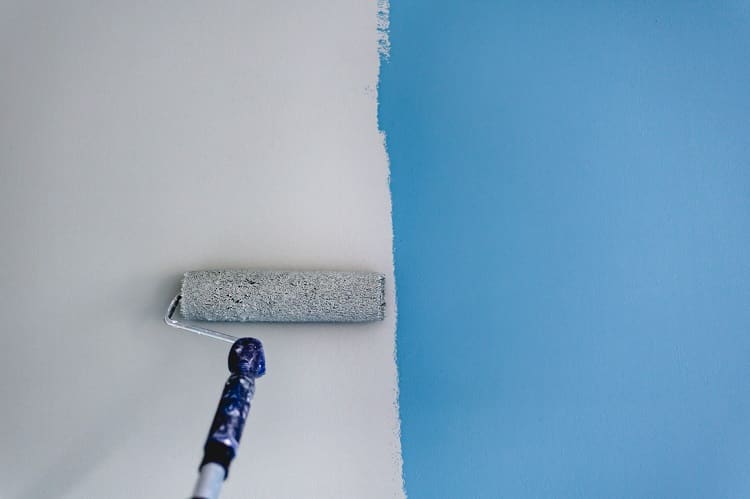
Proper Painting Techniques
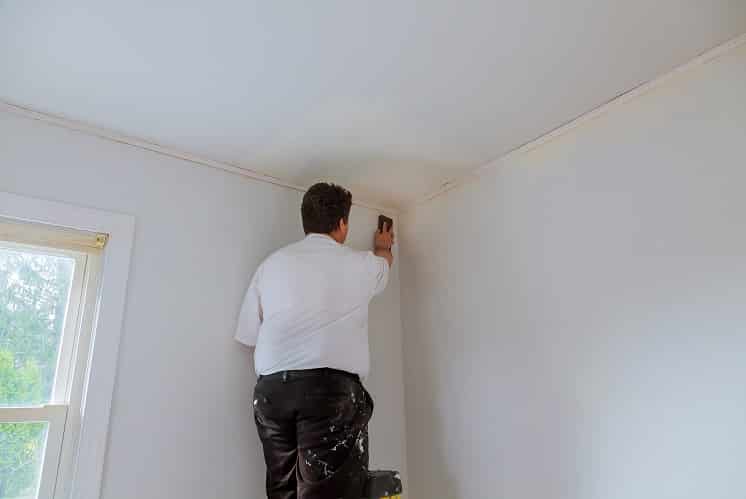
Prep Before Paint
The Best Work Comes from a Professional
Our professional painters have the knowledge and expertise to provide you with a beautifully painted home. Contact Jim’s Paint and More to learn about our interior painting services today.
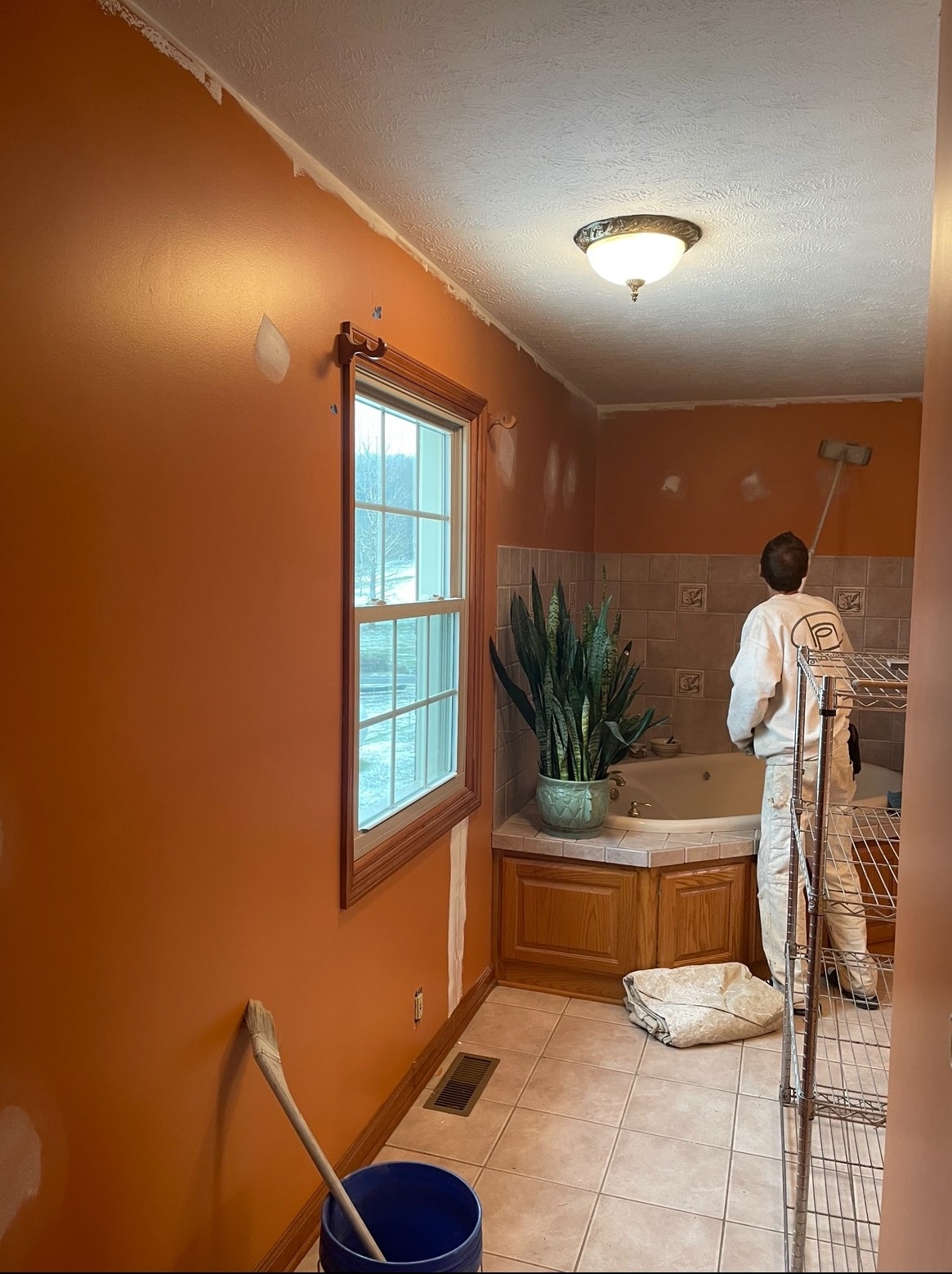
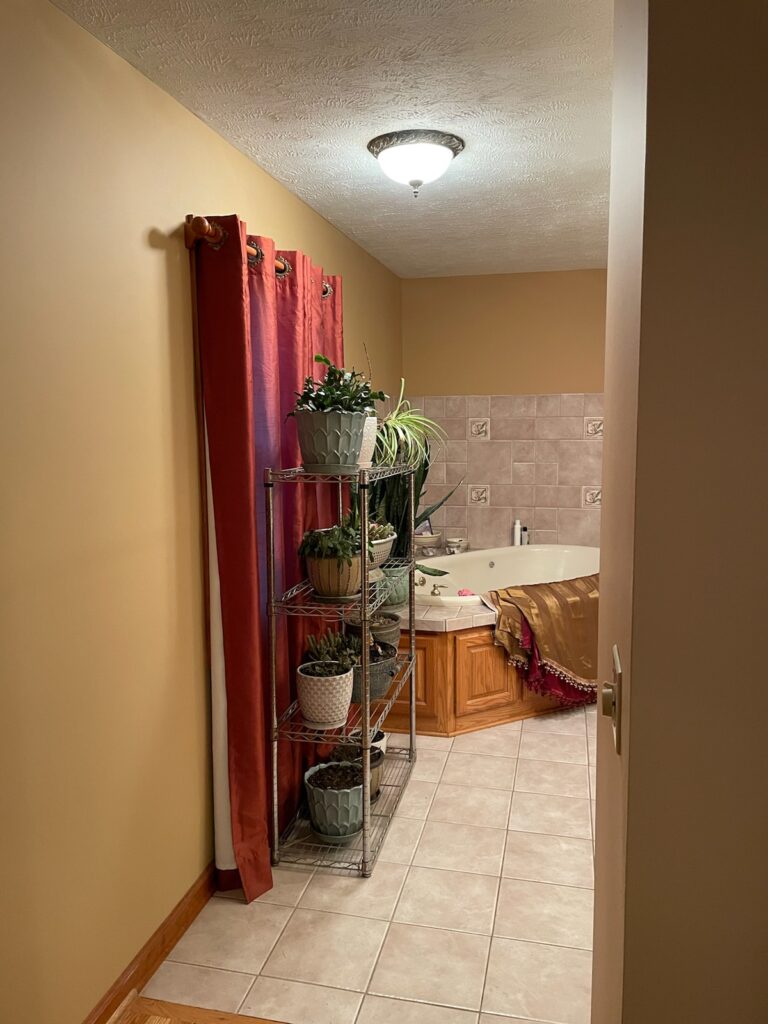
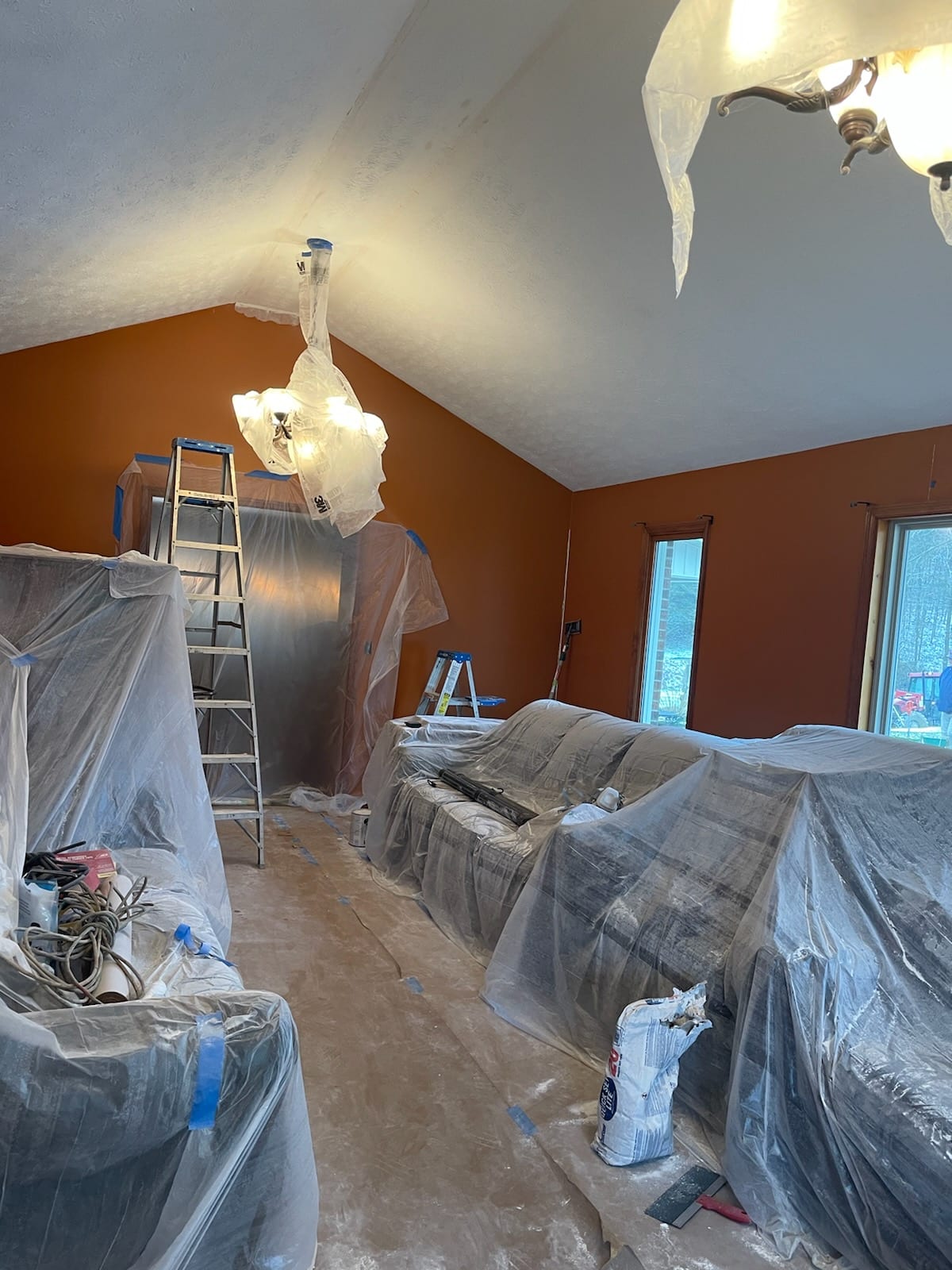
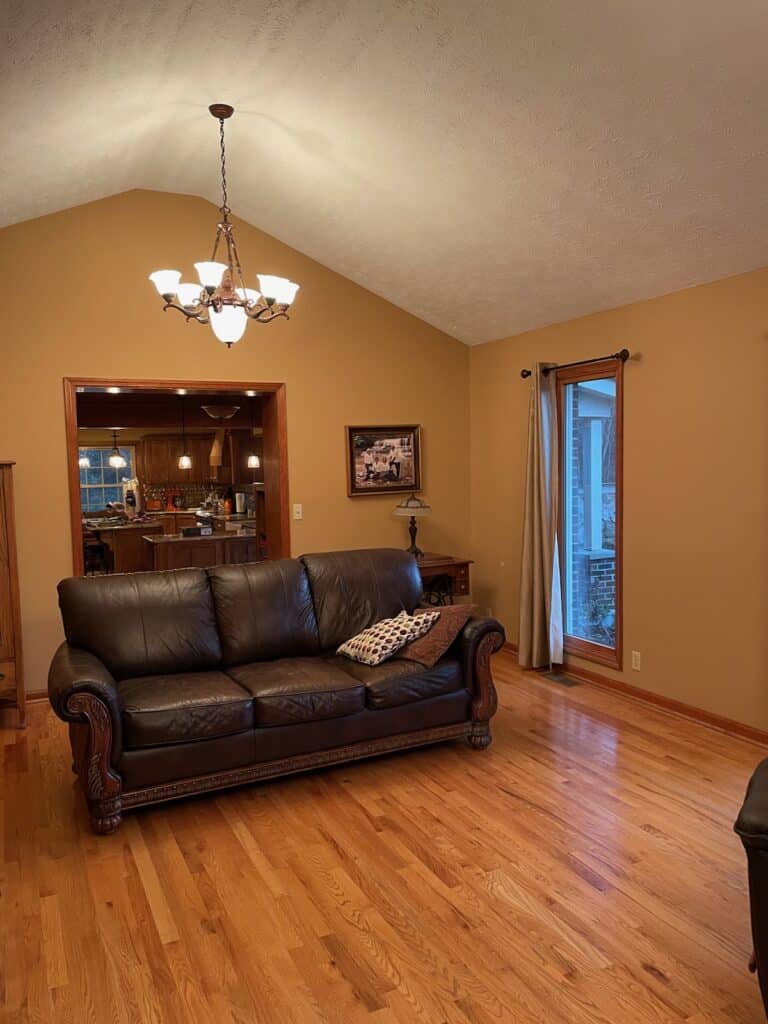
Selecting the Right Interior Paint
Water-based (latex) paints
Water-based paints are easy to apply, dry quickly, and emit fewer odors. They are also resistant to yellowing, making them ideal for most interior applications. Cleanup is simple, requiring only soap and water.
Oil-based (alkyd) paints
Oil-based paints provide a durable and long-lasting finish, especially beneficial for high-traffic areas and surfaces requiring frequent cleaning. They are, however, more challenging to apply and clean up, and they emit more pungent odors.
Interior Paint Finishes
Matte/flat
A matte finish offers a non-reflective surface, effectively hiding imperfections and providing a uniform appearance. It is well-suited for ceilings and low-traffic areas but may be less durable and more challenging to clean.
Eggshell
Eggshell finishes have a subtle sheen that adds depth to walls while concealing minor imperfections. They are more durable than matte finishes and suitable for moderately trafficked areas, such as living rooms and bedrooms.
Satin
Satin finishes offer a smooth, velvety appearance with a moderate level of reflectivity. They are more durable and easier to clean than eggshell finishes, making them ideal for high-traffic areas like hallways, kitchens, and bathrooms.
Semi-gloss
Semi-gloss finishes providing a sleek and reflective surface, adding a touch of sophistication to a room. They are highly durable and easy to clean, making them suitable for trim, doors, and cabinets.
Gloss
Gloss finishes offer the highest reflectivity, creating a dramatic and bold statement. They are exceptionally durable and easy to clean but may highlight imperfections on the surface. Gloss finishes are best suited for trim, doors, and accents.

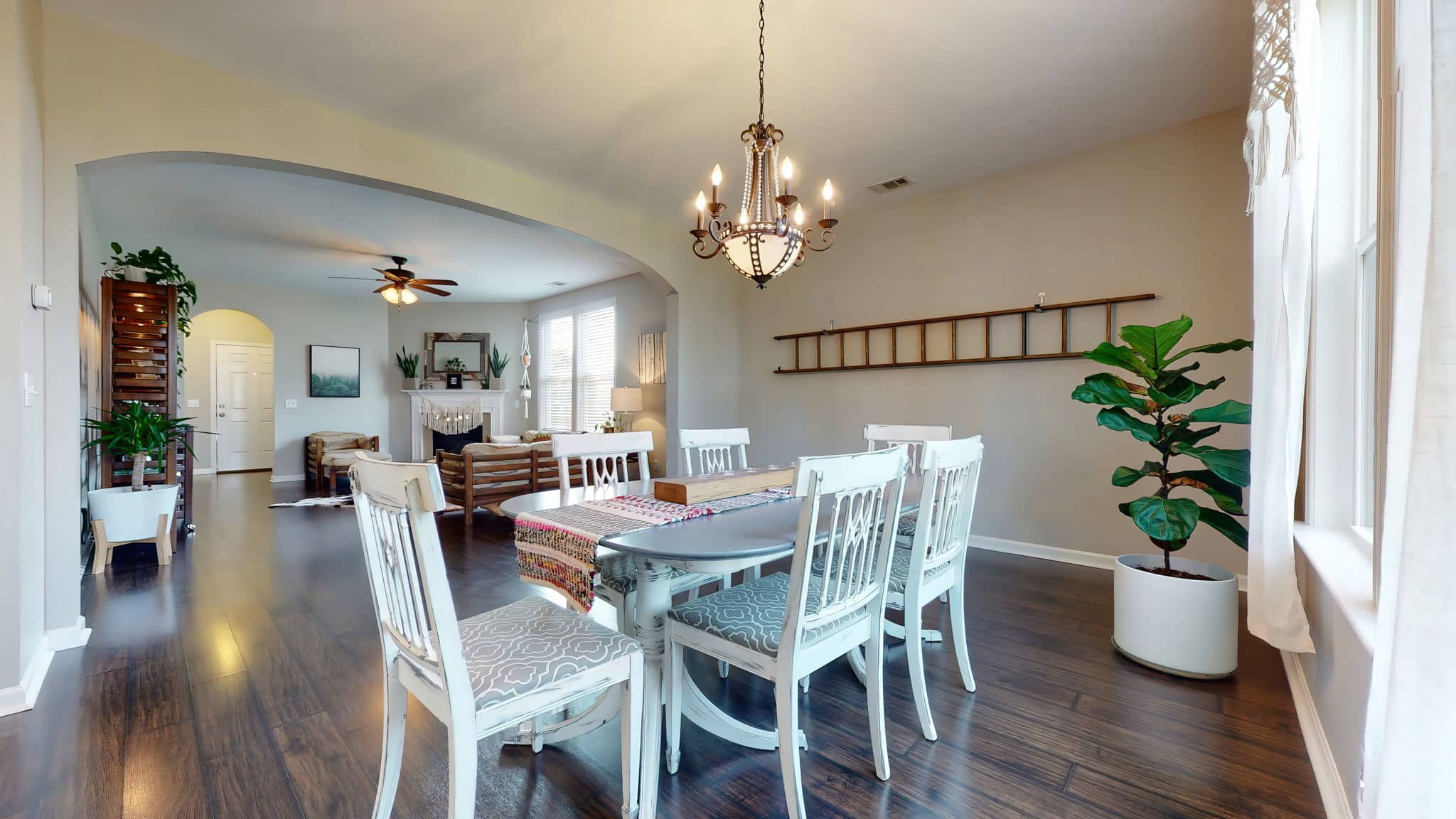
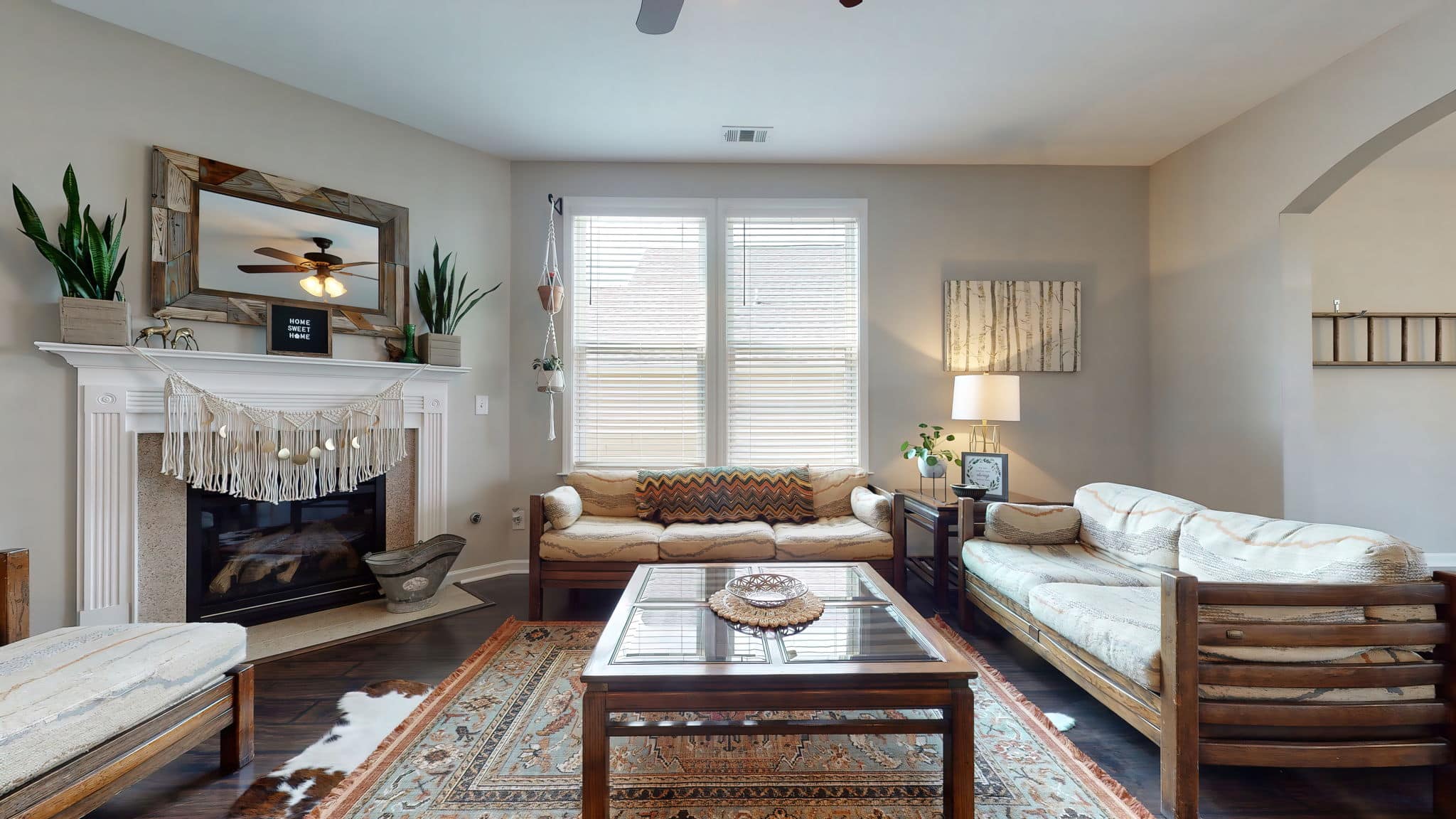
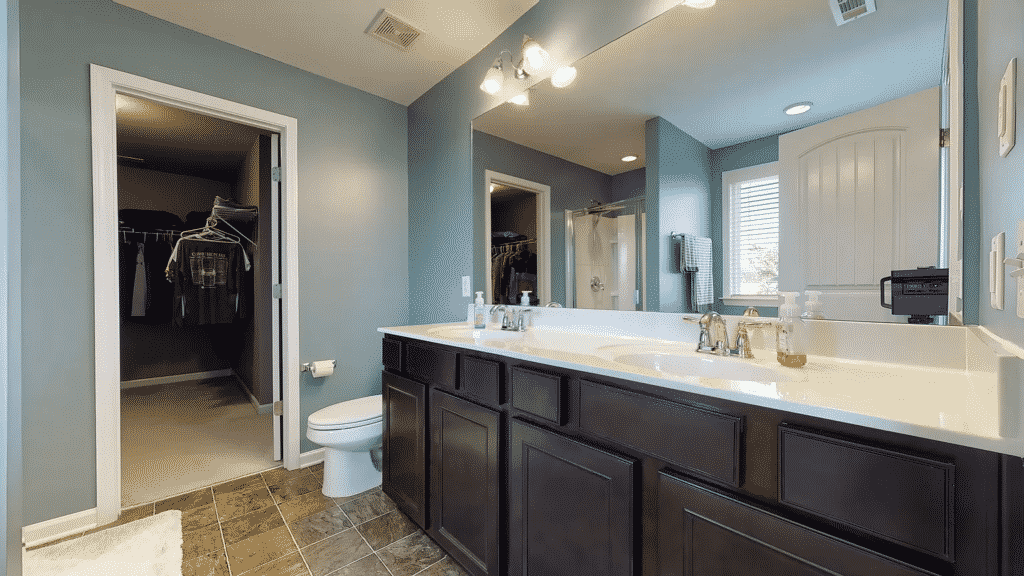
Choosing the Perfect Color
Warm colors
Warm colors like reds, oranges, and yellows evoke energy, excitement, and passion. They can be used in social areas like living rooms and dining rooms to create a welcoming and stimulating atmosphere.
Cool colors
Excellent colors, like blues, greens, and purples, have a calming and soothing effect. They can be utilized in bedrooms, bathrooms, and home offices to promote relaxation and focus.
Neutral colors
Neutral colors, such as white, gray, beige, and taupe, provide a versatile backdrop that can complement any design style. They can be used in any room and paired with bolder accent colors for a balanced and harmonious look.
Coordinating with Existing Décor
Complementary colors
Complementary colors are opposites on the color wheel and create a dynamic contrast. For example, pairing blue with orange can add a lively and energetic vibe to a room.
Monochromatic schemes
A monochromatic color scheme uses various shades, tints, and tones of a single hue to create a cohesive and harmonious look. This approach can give room depth and dimension while maintaining a unified aesthetic.
Analogous color schemes
Analogous color schemes involve using colors adjacent to each other on the color wheel. This approach can create a subtle and visually appealing vibrant and harmonious look.
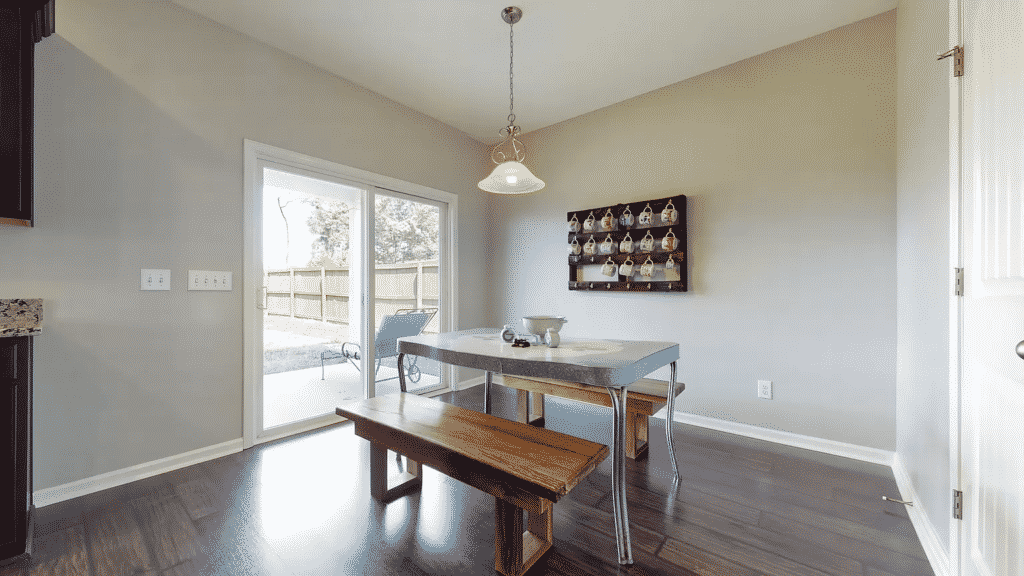

Interior Painting Process
Taping off edges
Professional painters will use painter’s tape to create clean lines and protect adjacent surfaces from unwanted paint transfer.
Protecting surfaces
In addition to floors, painters should protect countertops, fixtures, and furniture from paint splatters and spills.
Applying primer
If necessary, the painting service will apply a primer to the walls, allowing them to dry before proceeding with the paint application.
Interior Painting Techniques
Brushwork
We will use brushes for cutting in, painting trim, and other detailed work. We use high-quality brushes that provide smooth and even coverage.
Rolling
Rollers are used for covering larger wall surfaces quickly and efficiently. Professional painters will use the appropriate roller nap and technique to ensure a uniform application.
Cutting in
Cutting in involves painting the edges and corners of a room with a brush before using a roller for the larger surfaces. This technique ensures a clean, professional finish.
Spray painting
We may sometimes use spray painting equipment for a faster and more consistent application. This method is more common in commercial projects and requires specialized skills and equipment.

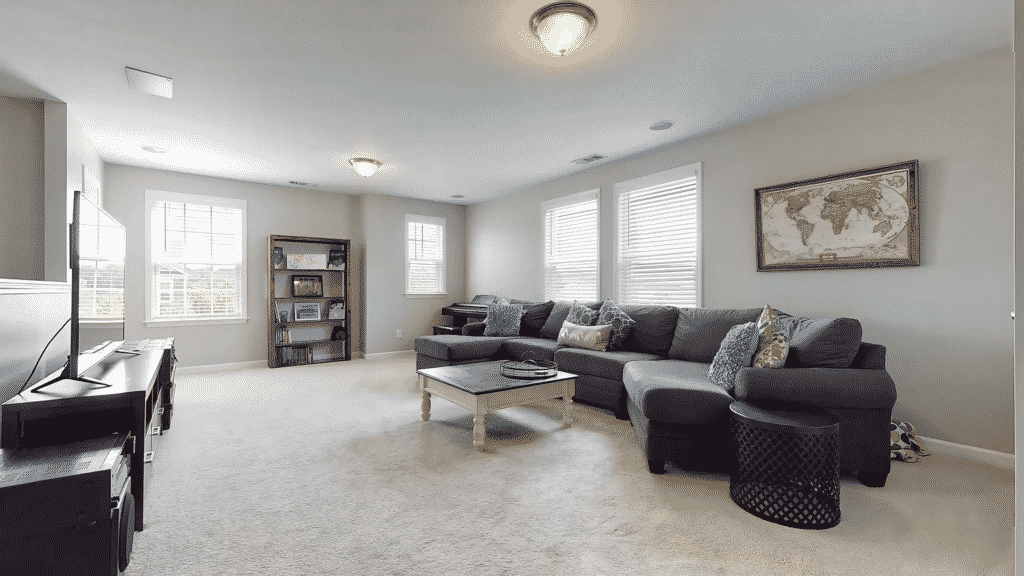
Cleanup and Touch-ups
Removing tape and materials
After the paint has dried, painters will remove the tape and other protective materials, taking care not to damage the fresh paint.
Addressing any imperfections
Professional painters should inspect the finished work for imperfections, such as drips or uneven coverage, and correct them as needed.
Proper disposal of paint and supplies
Painters should dispose of any leftover paint and supplies by local regulations and environmental best practices.
Maintaining Your Newly Painted Walls
Dusting and vacuuming
Regularly dust and vacuum walls to prevent the buildup of dirt and allergens. Use a soft brush or microfiber cloth to gently remove dust without damaging the paint.
Washing and spot cleaning
For more stubborn dirt and stains, use a mild detergent and water solution to wash the affected area gently. Avoid using abrasive cleaners or scrubbing too hard, which can damage the paint.
Preventing Damage
Furniture placement
Position furniture and other items away from walls to minimize the risk of scuffs, scratches, and further damage to the paint.
Wall protection
Consider installing wall guards, corner protectors, or chair rails to shield high-impact areas from damage.
Repairing minor issues before they worsen
Address minor paint damage, such as chips or scratches, as soon as they occur to prevent further deterioration and maintain the appearance of your walls.
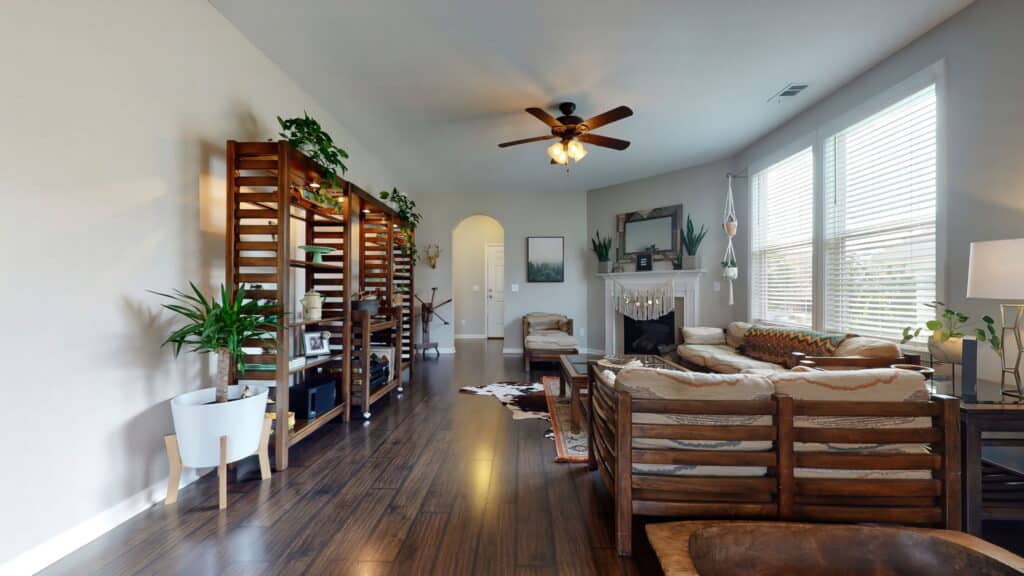
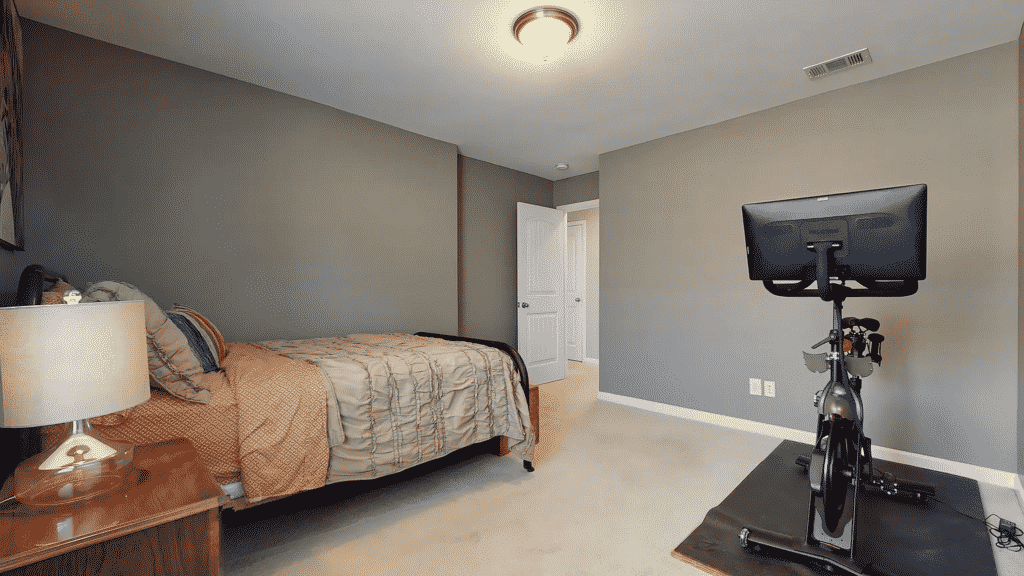
Environmentally Friendly Painting Options
Health benefits
Low-VOC and zero-VOC paint emit fewer volatile organic compounds, reducing the risk of respiratory irritation, headaches, and other health concerns associated with traditional colors.
Environmental impact
By using low-VOC or zero-VOC paints, you can minimize your environmental footprint and contribute to improved indoor air quality.
Frequently Asked Questions (FAQs)
How long does it take to complete an interior painting project?
The duration of an interior painting project can vary depending on factors such as room size, the complexity of the job, and the painting service’s schedule. Generally, a single room can take a day to a week, while more significant or more intricate projects may take several weeks.
How much does it cost to hire an interior painting service in Murfreesboro?
The cost of hiring an interior painting service depends on factors such as the size and scope of the project, the type and quality of paint used, and the location. It’s essential to obtain multiple quotes from different painting services to compare costs and understand what’s included in the estimate.
When is the best time of year to paint interiors?
While interior painting can be done year-round, the ideal time may vary depending on the climate. Warmer, drier weather can help paint dry faster and more evenly, but excessive heat can cause paint to dry too quickly, leading to an uneven finish. Scheduling your project during a season with moderate temperatures and low humidity can provide the best results.
How do I maintain my painted walls to keep them looking fresh?
To keep your painted walls looking their best, dust and vacuum them regularly, gently wash any dirt or stains with a mild detergent and water, and address minor damage as it occurs. Prevent scuffs and scratches by positioning furniture away from walls and installing wall guards or corner protectors where needed.
What should I look for in an interior painting service?
When selecting an interior painting service, consider experience, reputation, licensing and insurance, and customer reviews. Obtain multiple quotes to compare costs and benefits, and ensure the painting service you choose understands your specific needs and expectations.

